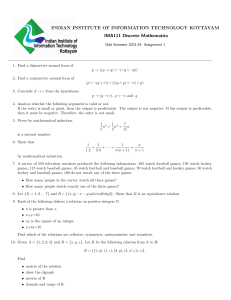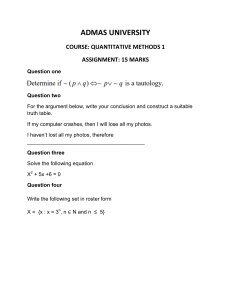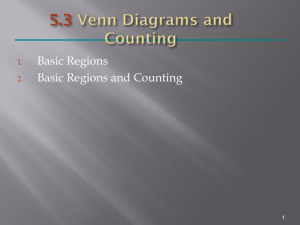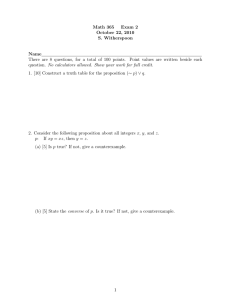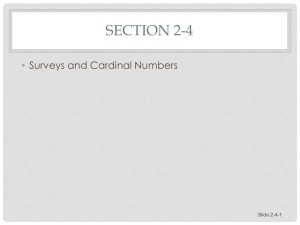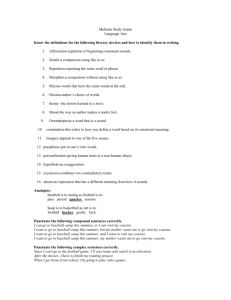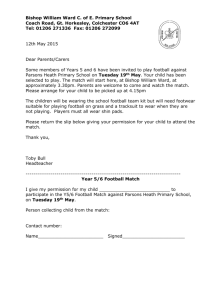2.4 Surveys and Cardinal Numbers Example: A survey of 132
advertisement
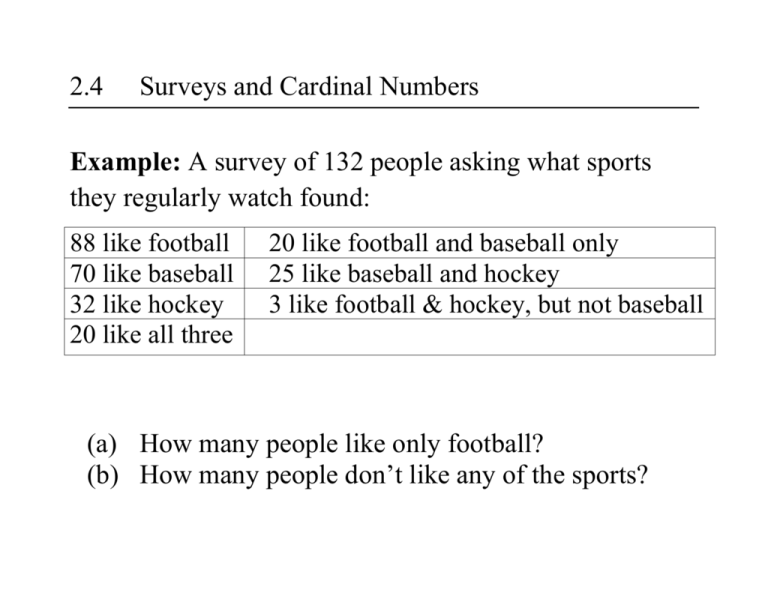
2.4
Surveys and Cardinal Numbers
Example: A survey of 132 people asking what sports
they regularly watch found:
88 like football
70 like baseball
32 like hockey
20 like all three
20 like football and baseball only
25 like baseball and hockey
3 like football & hockey, but not baseball
(a) How many people like only football?
(b) How many people don’t like any of the sports?
132 people.
88 like F
20 like F and B only
70 like B
25 like B and H
32 like H
3 like F and H but not B
20 like all three
F
B
H
U
F
B
20
45
25
20
3
5
4
H
10
(a) How many people like only football?
(b) How many people don’t like any of the sports?
Example. Let U = {p, q, r, s, t, u}, A = {p, q, r, s}, and
B = {s, t, u}. Find:
(a) 𝑛(𝐴)
(b) 𝑛(𝐵)
(c) 𝑛(𝐴 ∩ 𝐵)
(d) 𝑛(𝐴 ∪ 𝐵)
Cardinal Number Formula
Definition: For any sets A and B, the cardinality of the
union of A with B can be found using
n A
B n( A) n( B ) n( A
B ).
Example.
(a) Find 𝑛(𝐴) if 𝑛(𝐴 ∪ 𝐵) = 50, 𝑛(𝐴 ∩ 𝐵) = 8, and
𝑛(𝐵) = 38.
Recall: 𝑛(𝐴 ∪ 𝐵) = 50, 𝑛(𝐴 ∩ 𝐵) = 8, and 𝑛(𝐵) = 38.
(b) Draw a Venn diagram to illustrate sets A and B and
fill in the cardinalities for each region.
Example. Preferences and ages of breakfast patrons are
summarized in the following table:
Find the number of people in the following sets.
(a) 𝑌 ∪ 𝐶
(b) 𝑇 ∩ 𝑂′
(a) 𝑛(𝑌 ∪ 𝐶)
(b) 𝑛(𝑇 ∪ 𝑂′)
𝑛(𝑇 ∪ 𝑂′) = 55 + 77 + 24 = 156 people.
Or, 15 + 22 + 18 + 30 + 25 + 22 + 24 = 156 people.
